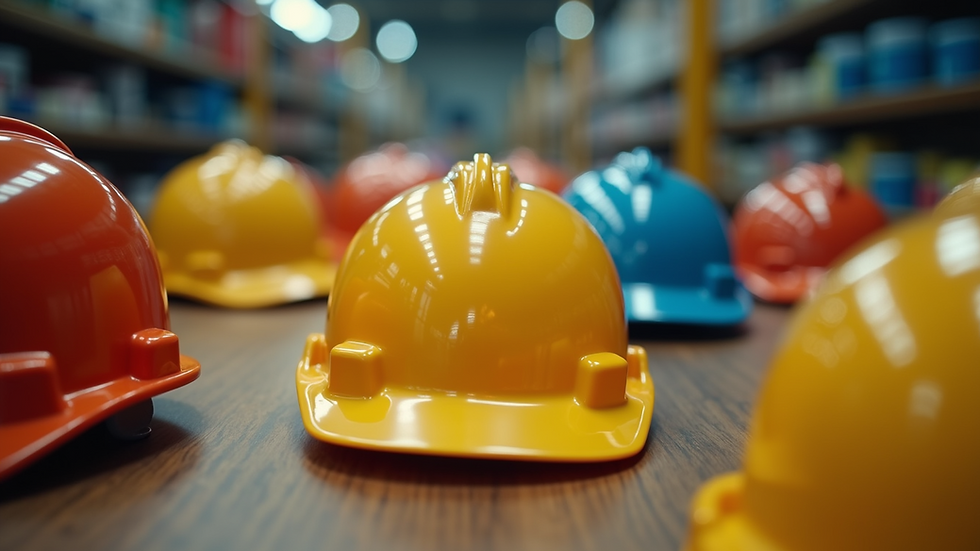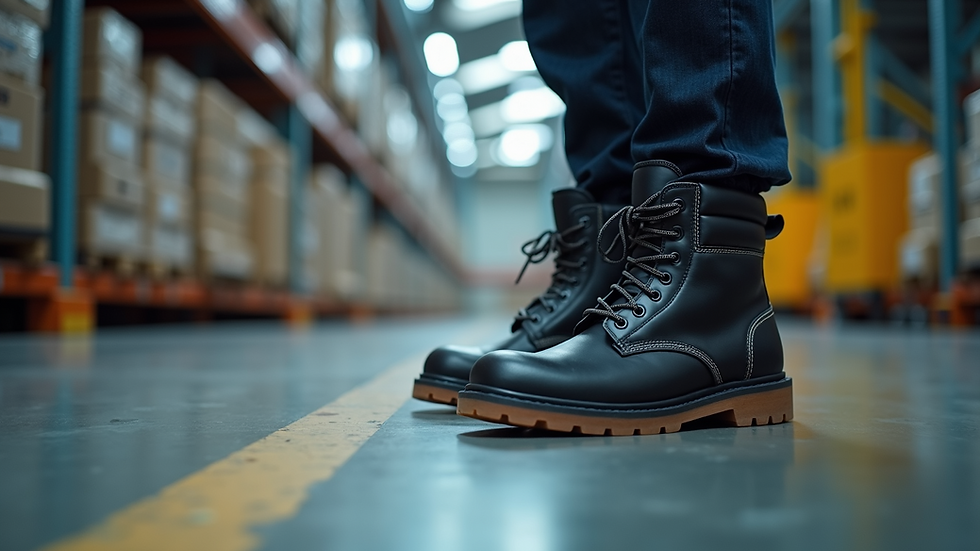Essential Safety Gear for Workplace Protection
- jdcorona3
- May 28
- 4 min read
In any workplace, safety should be the top priority. Ensuring a safe working environment not only protects employees but also boosts productivity and morale. The right safety gear can make a significant difference in preventing injuries and minimizing hazards. In this blog post, we’ll explore essential safety gear every workplace needs, including specific examples and practical advice.
Importance of Safety Gear
Safety gear, often referred to as personal protective equipment (PPE), plays a crucial role in keeping employees safe. This equipment helps reduce the risk of injuries and fatalities caused by workplace hazards. According to the Occupational Safety and Health Administration (OSHA), using safety equipment can significantly reduce workplace accidents and long-term health issues.
Consider the following statistics:
In 2020, there were approximately 4.3 million reported non-fatal workplace injuries in the United States.
The construction industry alone accounts for around 20% of worker fatalities every year, underscoring the necessity for proper safety gear.
Investing in adequate safety gear is not just a legal obligation; it is also a moral one. Employees should feel secure in their work environment, knowing that their safety is paramount.
Types of Safety Gear
There are various types of safety gear designed for different hazards. Below are some key categories along with recommended examples:
Head Protection
Hard hats are essential for protecting the head from falling objects, electrical hazards, and impacts. They come in different types, including:
Class G (General Use): Provides protection from low-voltage electrical conductors.
Class E (Electrical): Offers high-voltage protection.
Class C (Conductive): Providesno electrical protection and is typically used in non-hazardous environments.
Before choosing a hard hat, ensure it meets the safety standards set by ANSI/ISEA.

Eye and Face Protection
Safety glasses and face shields are crucial for protecting against flying debris, chemical splashes, and intense light. Here are a few options:
Safety Glasses: Must meet ANSI Z87.1 standards and come with anti-fog and scratch-resistant features.
Face Shields: Provide additional protection for the facial area and are often used in conjunction with safety glasses.
For employees working with chemicals, consider glasses with side shields for maximum protection.

Hearing Protection
Employees exposed to high noise levels must wear hearing protection to prevent long-term damage. Options include:
Earplugs: Disposable or reusable types that fit inside the ear canal.
Earmuffs: Cover the entire outer ear, providing a higher level of noise reduction.
It's essential to choose hearing protection based on the noise level of the environment.
Foot Protection
Safety shoes and boots are vital for protecting feet from heavy objects, slips, and electrical hazards. Look for features such as:
Steel Toe Caps: Provide excellent protection against impacts.
Slip-Resistant Outsoles: Essential for preventing slips and falls.
Employers should ensure that all footwear meets applicable safety standards, such as ASTM F2413.

Body Protection
Depending on the industry, employees may need additional body protection, which can include:
High-Visibility Clothing: Essential for workers in areas with vehicular traffic or low-light conditions.
Protective Coveralls: Used in various industries to prevent exposure to harmful substances.
When selecting clothing, consider the specific environment and tasks the employees will perform, ensuring compliance with safety regulations.
Importance of Training
Providing safety gear is only part of the equation. Equipped employees must undergo proper safety training to use their gear effectively. Regular training sessions should include:
Proper usage and maintenance of equipment.
Emergency procedures in case of an accident.
Awareness of workplace hazards and risks.
Promoting a culture of safety through continuous education can significantly enhance workplace protection.
Regular Maintenance and Inspection
Safety gear requires regular maintenance to remain effective. Employees should inspect their gear daily before use to ensure it is in good condition. Replace any damaged or outdated equipment immediately. Set up a routine for comprehensive inspections, and schedule replacements on a timely basis.
Making Safety Gear Accessible
Employers must ensure safety gear is readily available and easily accessible to all employees. This includes:
Providing gear in various sizes to accommodate every worker.
Keeping equipment in convenient locations to encourage use.
Allowing employees to suggest improvements based on comfort and usability.
Investing in Quality
Substandard safety equipment can lead to serious injuries or fatalities. When sourcing gear, invest in high-quality products that meet safety standards. The benefits far outweigh the initial costs, preventing accidents that can lead to costly legal issues, medical expenses, and reduced productivity.
Link to quality sources for personal protective equipment that can serve your workplace needs.
Commitment to Safety
Creating a safe workplace is a commitment that involves everyone in the organization. Management should lead by example, demonstrating the importance of safety gear and procedures. Encourage open communication about safety concerns and solutions among team members.
By fostering a collaborative environment, employees will feel empowered to prioritize their safety and that of their peers.
Final Thoughts
Ensuring a safe workplace requires a thoughtful approach to safety gear, training, and overall safety culture. Providing essential safety equipment, regularly inspecting and maintaining it, and fostering a culture of awareness and communication can dramatically reduce accidents and injuries.
Adopting these practices will not only protect employees but also create a healthier and more productive work environment for everyone. Safety gear is not just an accessory; it is an essential component of workplace protection.
Let’s prioritize a safer future for our workplaces!



Comments